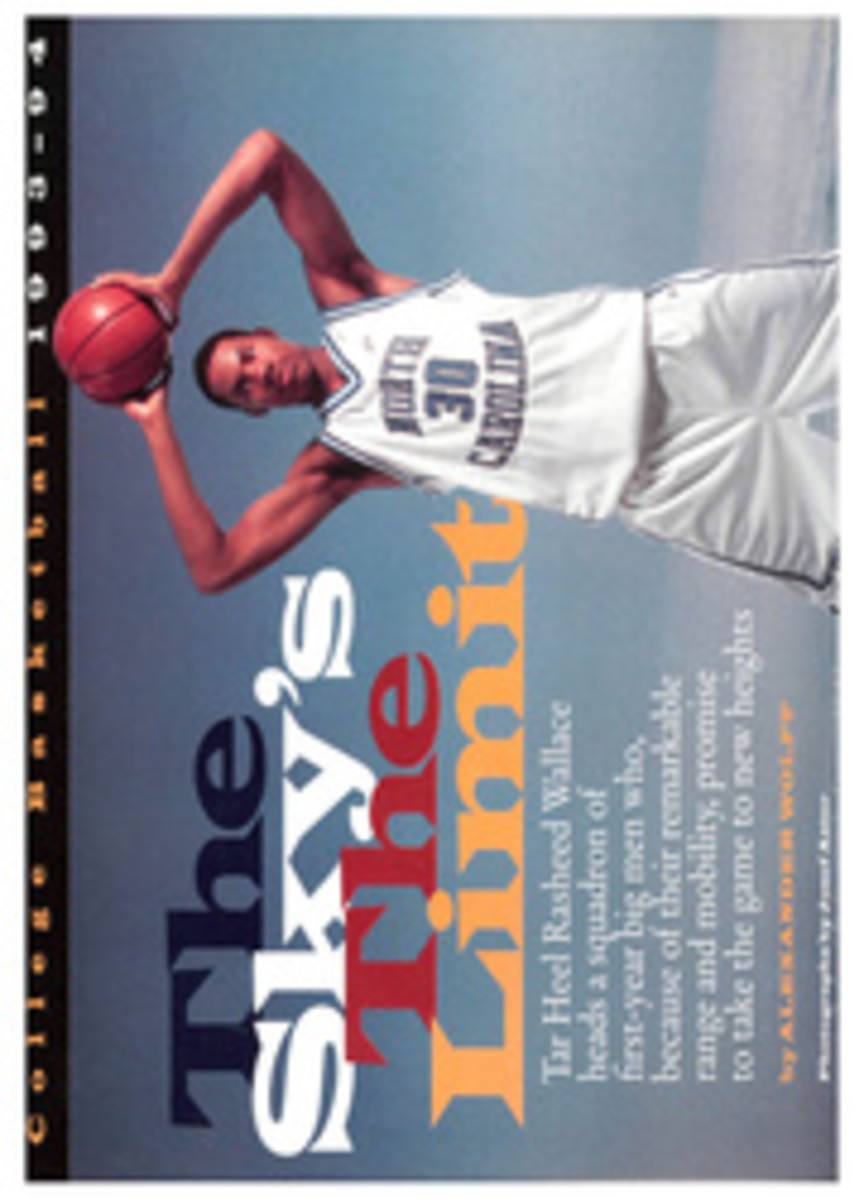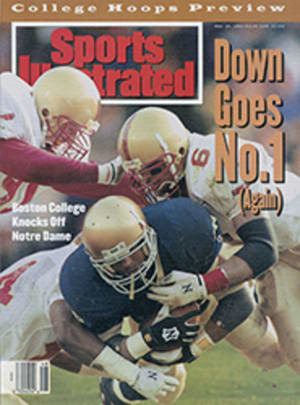
Fairest of the Fowl
To say that De Senna, the most expensive racing pigeon ever brought to the United States, is worth his weight in gold is to underestimate the value of this bird. The Dutch-born, gray- and silver-feathered champion, winner of the Netherlands' National Ace Pigeon award in 1992, weighs all of 14 or 15 ounces. Last January, Campbell Strange, one of America's premier pigeon breeders, purchased De Senna for $33,000, more than six times the value of his weight in gold.
De Senna now lives on the pigeon world's Park Avenue, the stud building of Strange's 111-acre Oak Haven Farms in the Texas ranch country outside Fort Worth. Residing in the buildings' 16 pens is a veritable Who's Who of avian superstars—Ace Van Bommel, Lichte Orleans, Bliksem, Super 239—most of them purchased by Strange for $20,000 or more apiece. The birds' diet and physical condition are monitored obsessively; their pens are cleaned at least once a day; their rooms are climate-controlled. In return the birds fertilize eggs that make the golden goose's legendary offerings seem paltry: Each of their offspring sells for $1,500 to $2,500.
"These are not your average disease-ridden street pigeons," says Strange, 54, cradling a down-covered, three-week-old bird in his palm. "City birds are nothing but feathers and bones. Racing birds are tremendous athletes, highly muscled, rigorously trained, the very essence of health and hygiene. These are the pigeons everybody wants."
When Strange says "everybody," he is referring to the world's one million pigeon racers, better known as fanciers. Only 20,000 live in the U.S., most of them in California and the Northeast, but their fervor is such that they support four magazines, two national organizations and a soon-to-open pigeon Hall of Fame in Oklahoma City.
Europeans are even more feather headed. In Belgium there are 100,000 fanciers in a country of roughly 10 million, and the newspapers' sports sections are filled with bird stories. In the United Kingdom there are a quarter of a million fanciers—even the royal family owns a flock. Fanciers are also found throughout Asia, the Middle East, northern Africa and the South Pacific, making pigeon racing one of the few truly global sports.
But fanciers say that pigeon racing is more than a mere sport; it's a way of life. Assembling a team of top-notch racers is a herculean task. Successful fanciers—the majority of whom are middle-aged males—may spend as much as eight hours a day with their birds.
As in horse racing, bloodlines help predict which youngsters are likely to become champions. A first-time fancier will build a backyard loft and purchase a supply of pigeons from someone who is offering birds descended from superior stock. Someone, for example, like Strange.
The birds must then be trained. A racing bird is a homing pigeon, which means that it will always return to its home loft, even from distances of more than 1,000 miles. This homing instinct is still not fully understood; one theory is that pigeons navigate by sensing the earth's magnetic field. In order to ready a bird for the rigors of competition, fanciers spend months using various motivational techniques; a popular one is the so-called widowhood system, in which birds are separated from their mates until after the completion of a long flight, thus coaxing every ounce of speed out of the pigeon.
A finely trained racing pigeon is an astonishing animal. Its body feels as firm as an inflated bicycle tire. The bird's massive pectoral muscles power seven wing strokes per second for nonstop flights lasting as long as 15 hours. A pigeon can reach speeds of more than 60 miles per hour, while its heart beats 600 times per minute.
Pigeon fanciers race in leagues called clubs, all of whose members live in the same geographical area. Clubs throughout the U.S. hold weekly competitions during the spring and fall at distances of from 100 to 600 miles. The night before a race each breeder selects a team of birds, usually about a dozen, to enter. At the club's headquarters the pigeons' legs are banded with rubber countermarks; then the birds are caged and placed on trucks with the other teams—there can be several thousand birds in a race—and driven to the starting point.
The next morning, all the birds are released simultaneously. They start off in a giant, flapping pack, circling the starting area a few times to orient themselves. Then they dart homeward, breaking into smaller and smaller groups as the stronger birds surge to the front.
Breeders see none of this. They remain back at their lofts, staring skyward, anxiously awaiting their birds. When one finally appears, the feeling, says Ron Steinbrenner, 57, race manager of the San Diego Classic, one of America's top races, "is nothing short of euphoric. It's like watching your own horse come down the homestretch in the Kentucky Derby."
The bird's countermark is removed and placed in a tamperproof pigeon-racing clock, which records the finish time. Because each pigeon flies to its own loft and some are closer to the starting point than others, prize money is awarded not to the bird that finishes first, but to the one that flies the fastest. This is measured in yards flown per minute and is calculated by dividing the distance traveled—as determined by the club for each loft—by the time elapsed since the race's start.
For a race like the San Diego Classic, in which breeders from across America vie for nearly $200,000 in total prize money, breeders ship their birds to a local club representative. A trainer then settles the pigeons in a single loft for several months and prepares them for the race—to that loft. If prize money is won, most of it goes to the breeder, and the local club receives a percentage.
Pigeon breeding has a long history. Three-thousand-year-old Egyptian bas-reliefs depict trained carrier pigeons, and in the first century B.C., Julius Caesar used them as messengers to his troops during conquests. In the 1800s pigeons carried stock prices from London across the English Channel to Belgium. And in World War II, the U.S. Army employed 54,000 homing pigeons to transport messages to troops in the field.
Formal races began in the early 1800s in Belgium, and in 1878 the first major contest was held in the U.S., with a top prize of $100. Today the stakes are a tad higher. One of the most prestigious American races, the Snowbird Classic, which is held each November in the Los Angeles area, offers more than $700,000 in prize money. Following July's annual Barcelona International, pigeon racing's Super Bowl, the winning bird has in recent years sold for more than $200,000. And according to Strange, who has traveled the world in search of first-rate pigeons, there are races in Taiwan with first prizes of much more than $1 million.
As prize money escalates, so do the prices of birds. The winner of the '92 Barcelona was bought by a British breeding company for a record $230,000. And even Strange's birds, among the most highly priced in the U.S. at middle distances, are in such demand that until recently the only ad he ran this year was one that informed breeders that he was sold out of birds.
But as pigeon racing shifts implacably from sport to business, there is also a vocal backlash. Pigeon racing, say purists, is traditionally a backyard hobby, passed down from parents to children, a skill that must be learned, not purchased. Even Strange, the epitome of the business side of breeding, agrees: "You can spend a fortune on pigeons and never win a thing. Breeding is a talent that can't be bought; to create a winner you have to go into your loft and instinctively understand what your birds need."
Some fanciers go further, claiming that the sale of birds is unnecessary. "The prices are scaring people away from the hobby," says Don Corcoran, 72, a veteran Montana breeder. "But the truth is, you don't have to spend a dime on birds to become a winner. When I started more than 60 years ago, my racers were given to me by a neighbor, free of charge. And if there's anybody out there who's just beginning, or who's not doing too well, just let me know and I'll do the same."
TWO PHOTOS
KEN GEIGER
Strange (left, with fancier Bob Ferrell) gave De Senna (above) all the creature comforts.
PHOTO
KEN GEIGER
Birds of a feather splashed together in the main stud loft at Strange's ranch.
Michael Finkel is a winter sports fiend and a tireless seeker of the arcane and unusual.

